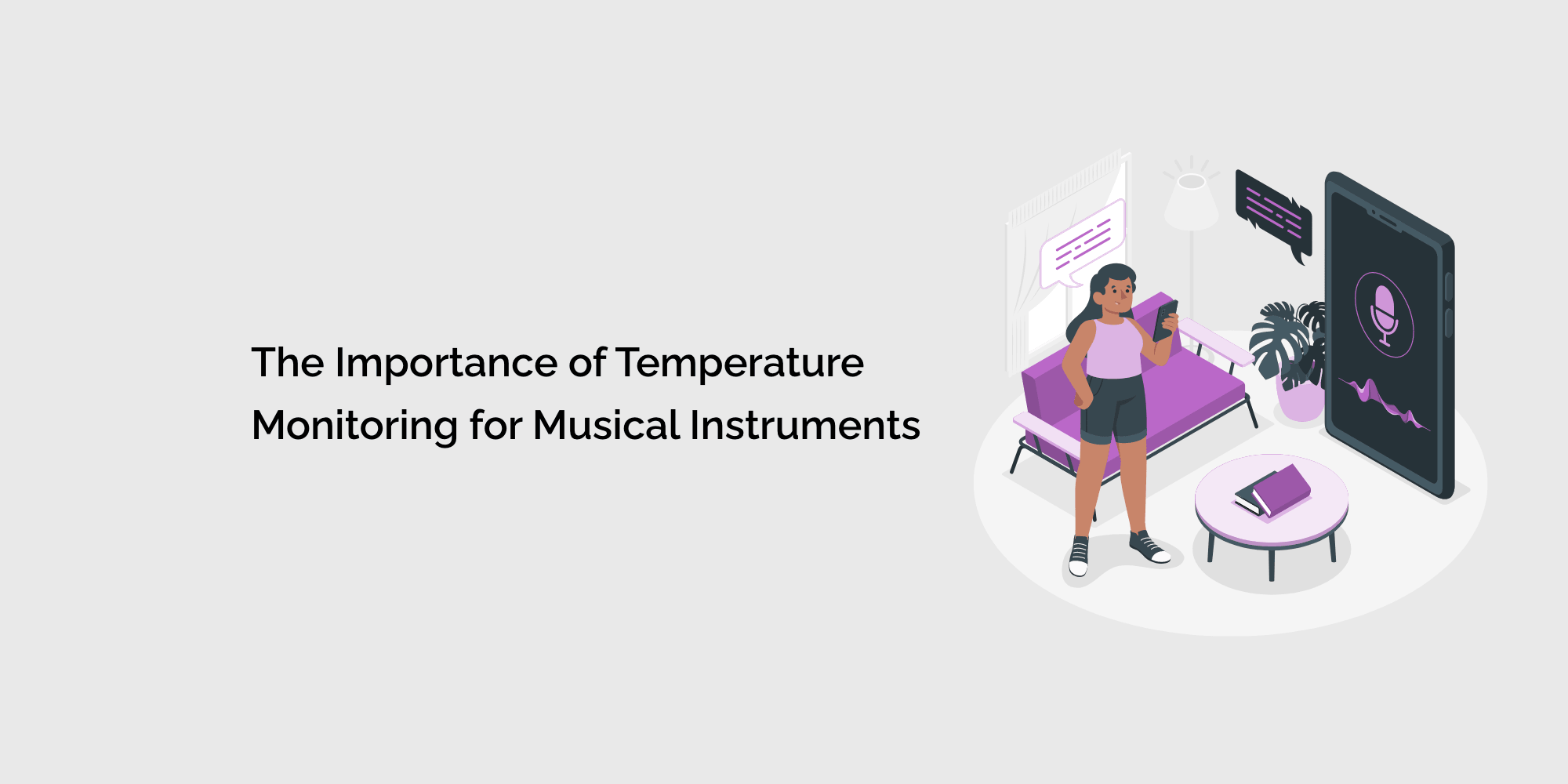Musical instruments are not just objects; they are delicate works of art that require careful handling and maintenance. Temperature is a crucial factor that significantly impacts the condition and longevity of musical instruments. This detailed blog post will explore the importance of temperature monitoring for musical instruments. We will discuss the effects of temperature on various instrument types, the ideal temperature ranges for storage, and practical tips for maintaining optimal temperature conditions. By understanding the significance of temperature control, musicians and instrument enthusiasts can ensure their beloved instruments' preservation and performance quality.
The Impact of Temperature on Musical Instruments:
- Wooden Instruments: Wooden instruments, such as guitars, violins, and pianos, are particularly sensitive to temperature fluctuations. Temperature changes can cause wood to expand or contract, leading to structural damage, tonal instability, and cracks. Temperature extremes can also impact the glue joints and finishes of these instruments.
- Brass and Wind Instruments: Temperature changes affect brass and wind instruments, such as trumpets, saxophones, and flutes, as well. Extreme heat or cold can cause metal components to expand or contract, affecting the instrument's pitch, intonation, and overall playability.
- Electronic Instruments: Even electronic instruments, such as synthesizers and keyboards, are susceptible to temperature-related issues. Components inside these instruments can be sensitive to extreme heat, which may lead to malfunctions or permanent damage.
Ideal Temperature Ranges for Instrument Storage:
- Wooden Instruments: The ideal temperature range for wooden instruments generally falls between 68°F and 72°F (20°C and 22°C). The wood remains stable within this range, minimizing the risk of damage or warping.
- Brass and Wind Instruments: Brass and wind instruments can tolerate slightly wider temperature ranges. However, it is still essential to avoid extreme fluctuations. Aim to store these instruments in a temperature range of 65°F to 75°F (18°C to 24°C).
- Electronic Instruments: Electronic devices are less affected by temperature fluctuations but should still be kept within a moderate range of 65°F to 80°F (18°C to 27°C). High temperatures can cause electronic components to overheat, leading to malfunctions or reduced lifespan.
Practical Tips for Temperature Monitoring:
- Use a Thermometer: Place a thermometer in the area where you store your instruments to monitor the temperature regularly. Choose a thermometer that provides accurate readings and is easily readable.
- Avoid Direct Sunlight: Direct sunlight can raise the instrument's temperature and cause damage. Keep your devices away from windows or use curtains or blinds to block out excessive sunlight.
- Beware of Heat Sources: Keep instruments away from direct heat sources such as radiators, heaters, or vents. Extreme heat can cause rapid temperature changes and compromise the device's integrity.
- Maintain Stable Room Temperature: Try to maintain a stable room temperature using heating, ventilation, and air conditioning (HVAC) systems. Avoid drastic temperature changes, which can stress the instrument and affect its performance.
- Consider Climate Control Systems: If you live in an area with extreme temperature variations, consider investing in climate control systems designed explicitly for instrument storage. These systems provide precise temperature and humidity control, ensuring a stable environment for your instruments.
Traveling with Instruments:
- Protect Your Instrument During Transport: Be mindful of temperature changes when traveling with your instrument. Avoid leaving devices in a hot car or exposing them to extreme cold during transportation. Use protective cases or covers to insulate the tool and minimize temperature fluctuations.
- Allow for Acclimatization: If traveling to a different climate or environment, let your instrument acclimate gradually to the new temperature. Sudden changes can cause stress on the device, affecting its playability.
Additional Considerations:
- Humidity Control: Humidity is closely related to temperature and can impact instrument health. Instruments are susceptible to changes in humidity levels, which can cause warping, swelling, or cracking. Consider maintaining humidity levels between 40% and 50% for most instruments.
- Regular Maintenance: While temperature monitoring is essential, it should be part of an overall maintenance routine. Regularly inspect and service your appliances, addressing any issues promptly to ensure their longevity and optimal performance.
Certainly! Here are some frequently asked questions (FAQs) about temperature monitoring for musical instruments:
Which types of musical instruments are most affected by temperature changes?
Different types of musical instruments are susceptible to temperature changes, but some are more sensitive than others. Wooden instruments, such as guitars, violins, and pianos, are particularly affected as wood expands or contracts with temperature fluctuations. Brass and wind instruments can also be impacted, as temperature changes affect metal components and alter pitch and intonation. Even electronic devices can experience issues, as extreme heat can damage electronic components.
Do I need to monitor humidity along with temperature for instrument care?
Humidity is closely related to temperature and can also impact instrument health. Fluctuations in humidity levels can cause wood to swell or shrink, affecting the instrument's structure. It's also advisable to monitor humidity, maintaining levels between 40% and 50% for most devices.
Conclusion:
Temperature monitoring is of utmost importance for preserving the condition, tonal quality, and longevity of musical instruments. Whether you own a wooden puppet, a brass instrument, or an electronic one, understanding the effects of temperature fluctuations and implementing proper temperature control measures is crucial. By maintaining tools within the recommended temperature ranges, regularly monitoring temperature levels, and taking preventive measures during transport, musicians and instrument enthusiasts can protect their investments and ensure their instruments perform at their best. Remember, proper temperature control is integral to instrument care, enabling musicians to continue creating beautiful music for years to come.








